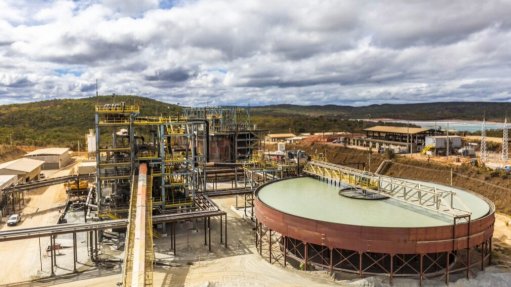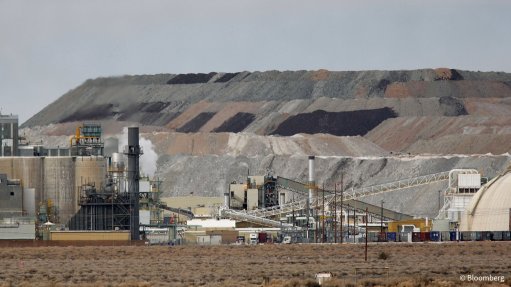From mine tech to solar tech - upskilling and reskilling for a greener future
This article has been supplied.
By: Jacques Farmer - MD at PRISMA Training Solutions
The mining industry faces a dual challenge: ensuring a reliable power supply while minimising its environmental impact. As the world transitions to cleaner energy sources, solar power emerges as a compelling solution. However, to fully harness its potential, the industry must develop a skilled workforce capable of building and maintaining solar power plants.
Mining is a power-hungry industry
Mining operations are renowned for their energy-intensive nature, demanding consistent power for a myriad of processes. From powering heavy machinery like excavators and crushers to operating ventilation systems and pumps in underground mines, electricity is the lifeblood of these operations. Historically, the industry has relied heavily on the national grid, often facing challenges related to power outages, load shedding, and fluctuating electricity costs.
While recent economic headwinds have temporarily reduced industrial activity, including mining, easing the pressure on the national grid, this is a short-term reprieve. As the global economy rebounds and the demand for minerals increases, so too will the mining sector's energy consumption, which is roughly 30% of Eskom’s annual power supply, according to Minerals Council South Africa.
The power of solar for mining
To ensure uninterrupted operations and mitigate risks associated with grid instability, mining companies are increasingly turning to on-site power generation. Solar energy is a compelling solution to power challenges, due to its sustainability and growing cost-competitiveness. By installing large-scale solar panel farms on mine sites, companies can generate clean electricity directly where it is needed, reducing their dependence on the grid. This not only helps to stabilise energy costs but also provides a hedge against future tariff increases. Moreover, solar power generation aligns with the global shift towards renewable energy sources, enabling mining companies to improve their environmental performance and reduce their carbon footprint.
Beyond cost savings and environmental benefits, solar power can enhance operational efficiency. For remote mine sites with limited grid access, solar energy can provide a reliable and cost-effective power source. Additionally, by generating electricity on-site, mining companies can reduce transmission losses, further optimising energy utilisation.
Building a skilled solar workforce
The successful integration of solar power into mining operations hinges on a skilled workforce capable of handling every stage of the solar energy lifecycle, which necessitates a significant investment in human capital development. A critical component of building a skilled solar workforce is the establishment of formal qualifications. Here, the introduction of a general technician qualification for solar installation is a vital step in ensuring that individuals possess the necessary knowledge and skills to work safely and efficiently.
By standardising training and certification, the industry can enhance quality, safety, and professionalism. A qualified workforce not only benefits the employees themselves but also instils confidence in clients and stakeholders. It demonstrates a commitment to quality and adherence to industry best practices.
Targeted upskilling and reskilling
To address the specific needs of the mining sector, targeted upskilling and reskilling programs are essential. By leveraging existing mine technician skills and combining them with solar technology training, the industry can create a highly competent workforce.
Additionally, the integration of solar technician training into social labour plans by mining houses provides an opportunity to empower local communities. By training community members as solar technicians, mining companies can contribute to local economic development and create sustainable employment opportunities.
As an example, the Exxaro project, which involves the development of a 60-hectare solar plant, offers a model for community engagement. By training local residents as solar technicians, the project not only supports the mine's renewable energy goals but also uplifts the community. Targeted training programmes in partnership with the Energy & Water SETA, provide the necessary skills and qualifications for individuals to excel in the solar industry. By creating a clear career path, these programmes foster a skilled workforce capable of designing, installing, and maintaining solar power plants.
A brighter future through solar power
As South Africa works towards a low-carbon economy, the mining industry has an opportunity to lead the way in renewable energy adoption. By investing in upskilling and reskilling programmes, the sector can secure its energy needs, create jobs, and contribute to a more sustainable future. The transition to solar power presents both challenges and opportunities, but with the right skills and support, the mining industry can successfully harness the power of the sun.
Article Enquiry
Email Article
Save Article
Feedback
To advertise email advertising@creamermedia.co.za or click here
Press Office
Announcements
What's On
Subscribe to improve your user experience...
Option 1 (equivalent of R125 a month):
Receive a weekly copy of Creamer Media's Engineering News & Mining Weekly magazine
(print copy for those in South Africa and e-magazine for those outside of South Africa)
Receive daily email newsletters
Access to full search results
Access archive of magazine back copies
Access to Projects in Progress
Access to ONE Research Report of your choice in PDF format
Option 2 (equivalent of R375 a month):
All benefits from Option 1
PLUS
Access to Creamer Media's Research Channel Africa for ALL Research Reports, in PDF format, on various industrial and mining sectors
including Electricity; Water; Energy Transition; Hydrogen; Roads, Rail and Ports; Coal; Gold; Platinum; Battery Metals; etc.
Already a subscriber?
Forgotten your password?
Receive weekly copy of Creamer Media's Engineering News & Mining Weekly magazine (print copy for those in South Africa and e-magazine for those outside of South Africa)
➕
Recieve daily email newsletters
➕
Access to full search results
➕
Access archive of magazine back copies
➕
Access to Projects in Progress
➕
Access to ONE Research Report of your choice in PDF format
RESEARCH CHANNEL AFRICA
R4500 (equivalent of R375 a month)
SUBSCRIBEAll benefits from Option 1
➕
Access to Creamer Media's Research Channel Africa for ALL Research Reports on various industrial and mining sectors, in PDF format, including on:
Electricity
➕
Water
➕
Energy Transition
➕
Hydrogen
➕
Roads, Rail and Ports
➕
Coal
➕
Gold
➕
Platinum
➕
Battery Metals
➕
etc.
Receive all benefits from Option 1 or Option 2 delivered to numerous people at your company
➕
Multiple User names and Passwords for simultaneous log-ins
➕
Intranet integration access to all in your organisation





















